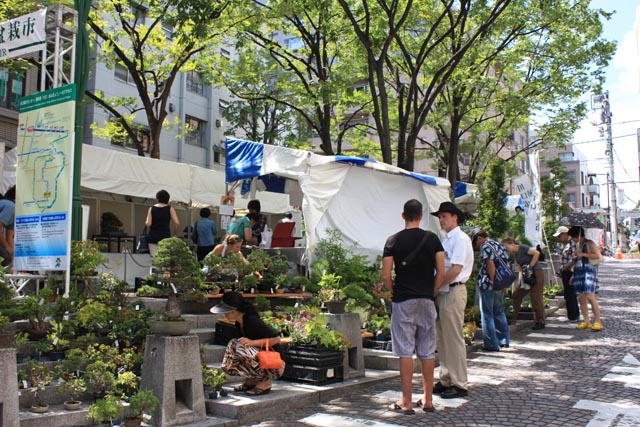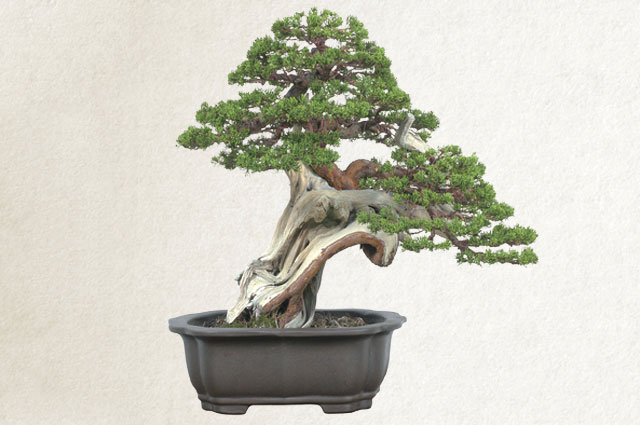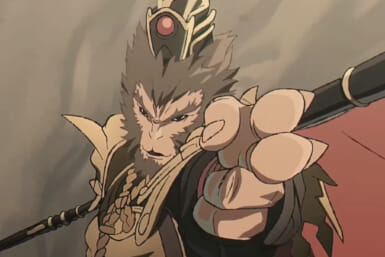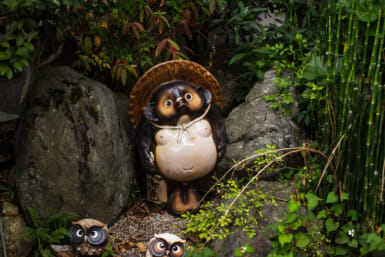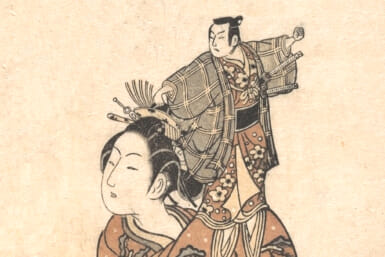With the annual Bonsai and Greenery Fair in Azabu Juban on our calendars again, we took a look at the artform and some of the most important things to understand about the not-always-so diminutive trees.
Green fingered hobbyists, collectors and members of the public looking for unique gifts might each have different reasons for their interest in bonsai, but they might all have one thing in common: a shared sense that this is truly an art form worth more than just scratching the surface of.
With an annual event in Tokyo just round the corner, we took a look at some of the reasons to take a closer look at bonsai culture and ask whether getting involved might be for you.
Bonsai & Greenery Fair in Azabu Juban
Several hundred expats and a couple of thousand more locals turned up to the annual Azabu Juban Bonsai fair last year, and 2013 should prove even more successful, with the event’s scale having grown without a hint of pruning over the last three years.
For families, bonsai experts or those who are just beginning to think about the green-fingered life, there are plenty of reasons to go to Patio Juban and take a look on September 8 and 9. You might want to pick up a tree for yourself, hone your pruning skills or simply learn a little more about a tradition being kept alive and allowed to thrive by the people from Angyo, Kawaguchi, who are bringing along their particularly well thought of bonsai, but however you see the day panning out, you will be welcome.
The Bonsai and Greenery Fair in Azabu Juban takes place on Sunday 8 and Monday 9 September, 2013. For more details and a map, click the red text!
Organisers hope that visitors will take the chance to meet the growers and pruners and watch them at work while strolling around one of Tokyo’s friendliest neighborhoods, making for a rather relaxing sounding weekend activity.
Ideally you’ll need to brush up on your knowledge should you take the plunge and opt to become a bonsai owner yourself.
Luckily, experts from the town of Angyo – a place long associated with greenery in all forms – will be on hand to offer a little advice and show you the way around some of the basic techniques behind their creations with a demo on Sunday 8 at 1.30pm. Many varieties will be on show – and on sale – and whether you are a veteran wanting to go deeper into the world of bonsai or fancy a family day out that ends in a new hobby and some take home trees, this is certainly the place for you.
The bonsai themselves can sell for pretty much however much you’d like to pay and all-comers should find something that sparks their interest and fits their budget. If you want something slightly special you can push your budget to anything from ¥10,000 to between ¥40-50,000, though really, there is no limit – some trees sell to collectors around the world for thousands of dollars, with bonsai from the region on show here prized amongst the very best.
Bonsai and Angyo
Around 45 minutes by train from Azabu Juban (that’s right, Saitama isn’t as far as you might think) is Angyo, part of Kawaguchi city and a hub for the green fingered – particularly bonsai buffs.
The area has a long association with the trees and for almost 400 years has been home to growers, sellers, markets and various visitors wanting to get their hands on any of hundreds of species available in the town.
Various greenery centers and bonsai gardens are clustered around the center of town and on arrival you should find it pretty easy to stroll around and find out a little more – and you won’t be alone.
Mr Haruhisa Akimoto, third generation owner at Akimoto Gardening explained to Weekender that he has seen a surge in interest in bonsai from abroad in recent years, and he’s happy to say that customers are seemingly more and more discerning.
According to one grower in Malaysia who is seeking Guinness World Record status for his naturally grown trees, bonsai can be as small as 22mm.
“Traditionally our customers often visit with Japanese dealers specializing in exporting bonsai, and we used to do a lot of ‘B-to-B’ deals, though now we are increasingly seeing the general public visiting us,” he explained. “I’m not sure why, but it’s interesting that we are seeing more and more Europeans, for example.”
The interest in bonsai has always been there – they are well known in the west, of course – but the increasing fondness for (and perhaps the fashionableness of) ‘artisanal’ products and items from craftspeople who are upholding traditions can perhaps be thanked for much of Angyo’s recent success.
Because it is so necessary for a bonsai to have been taken care of by skilled hands, learning about them and buying them direct from the source makes the process of getting involved in the hobby of pruning or collecting all the more enjoyable; heading to Angyo and taking a stroll around is the perfect place to do that.
How to get to Angyo:
The easiest way to get to south Saitama if you want to explore Angyo itself and get more than just a taste of bonsai history is to take the Saitama Railway line – which connects directly to the Namboku line – to Tozuka-Angyo.
For more info please visit: www.s-rail.co.jp/english
Bonsai fact file:
A Bonsai is not a miniature breed of tree, nor is it a genetically dwarfed variety. It is a regular tree – which can be deciduous, coniferous or tropical – that has been kept and ‘trained’ using sophisticated techniques so that it remains at its diminutive size.
There are several recognized ‘styles’ of bonsai, each designed to reflect situations in nature. From ‘wind-swept’ styles that have been trained to have natural curves, which appear to have been made over 100s of years, to those with cascading (kengai) trunks that spill over the edges of a container, there are many variations on the more formal upright styles.
The biggest bonsai in the world is claimed by a herb and rose garden in Atami – it has a 600 year old tree that is 5 meters tall and 10 meters wide but still ‘officially’ exists as a bonsai, such that it lives in a container… According to one grower in Malaysia who is seeking Guinness World Record status for his naturally grown trees, bonsai can be as small as 22mm.
Less is often more. Symmetry and proportion are key components to bonsai aesthetics, but it’s not all about the tree and its branches, it’s also about the space left around them. You’ll often be able to ‘see through’ part of a planned form, bringing a philosophical slant to looking at bonsai that look a lot older than they are.
The Japanese word when translated literally means something like ‘planted in a container’. Since those containers are usually pretty small, regular repotting is essential to ensure nutrients in the soil are replenished and the plant is allowed to thrive.
Bonsai is a Japanese word, of course, but the artform can be traced back around 2,000 years to the tradition of Penjing, in China – it arrived in Japan around 1,000 years ago.

